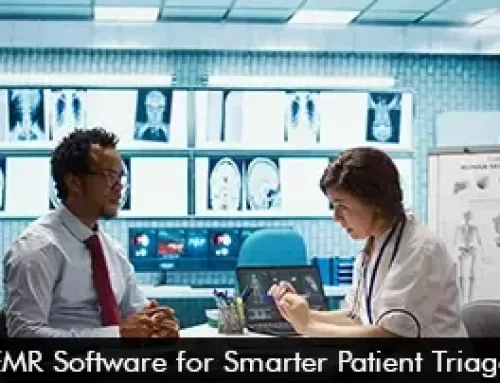User experience (UX) in Electronic Medical Records (EMR) Software is all about how healthcare providers use the system to complete clinical and administrative work. When the experience is smooth, intuitive, and responsive, users—like doctors, nurses, and administrative staff—can easily navigate the software without any confusion or frustration. 77.8% of office-based physicians use a certified EMR Software, implying that a positive user experience is vital.
A bad user experience can lower productivity, cause burnout, and even result in medical mistakes. On the other hand, a well-designed EHR Software interface can make workflows more efficient and lead to better patient care. As EMR Software becomes a key part of modern healthcare, the user experience has become crucial in determining how effective and widely adopted it is.
EMR Software: What Makes for a Great User Experience?
When it comes to EHR Software, several things can make or break the user experience. A big one is the interface design. EMR Systems that are easy on the eyes, simple to navigate, and let you customize your dashboard tend to be much more user-friendly. Another crucial element is how quickly the system responds. Nobody wants to deal with slow loading times that throw a wrench in their clinical operations. Also, making data entry a breeze helps a lot.
Features like voice-to-text, templates, and AI auto-fill can cut down on documentation headaches. How well the Electronic Health Records Software integrates with other tools, like lab systems, billing, imaging, and the like, also matters. If everything works together seamlessly, it saves users from constantly switching between different programs. Finally, being able to access the EMR Software on the go makes life a lot easier for providers who are busy or taking care of patients remotely.
The Advantages of Positive User Experience in EHR Software
A great user experience offers far-reaching advantages to both healthcare providers and patients. Providers and nurses can finish their work more quickly, meaning more time spent directly with patients and better quality care. It lightens the mental workload, which then lowers the chances of mistakes and boosts clinical precision.
An intuitive EMR Software cuts down on the time it takes to train new staff and promotes regular use throughout different departments. For healthcare facilities, this means higher efficiency, improved patient health, and reduced administrative costs. Satisfied users are also more eager to accept new additions and updates, helping ensure the system’s lasting success and return on investment.
Designing for Better EMR Software User Experience: A Path Forward
To boost the experience for users of Electronic Medical Records (EMR) Software, vendors and healthcare groups need to put the user front and center in the design process. This means getting input from the doctors, nurses, and other staff who’ll be using the system, both while it’s being built and once it’s in testing. It is important to keep gathering feedback and tweaking things so the software system genuinely fits the way people work in the real world. Running regular checks on how user-friendly the EHR Software is, and integrating new technology like AI, predictive analytics, and natural language processing, can make a huge difference too. At the end of the day, making EMR Software a joy to use isn’t just a technical issue; it’s about empowering healthcare providers to give patients the best care they can.







